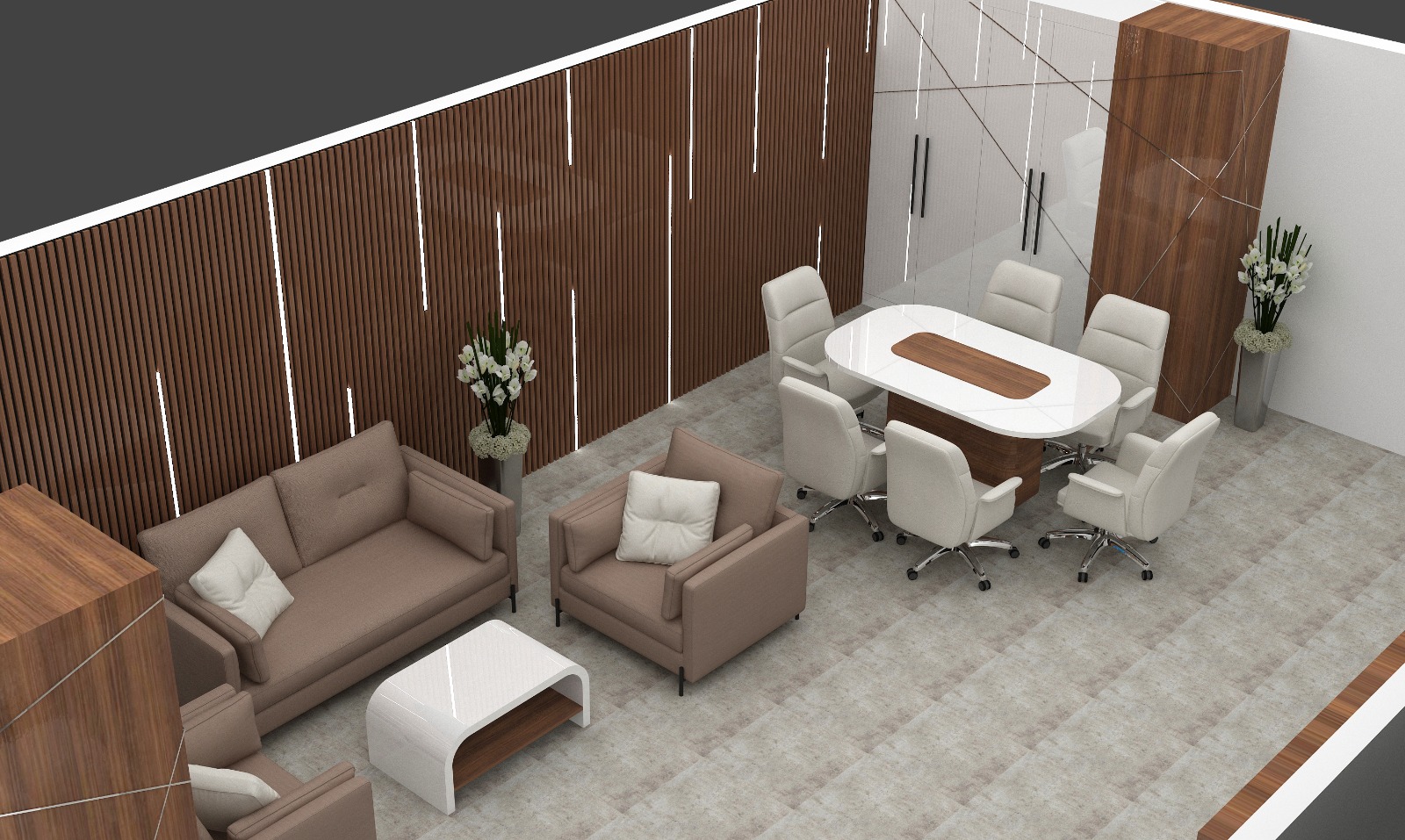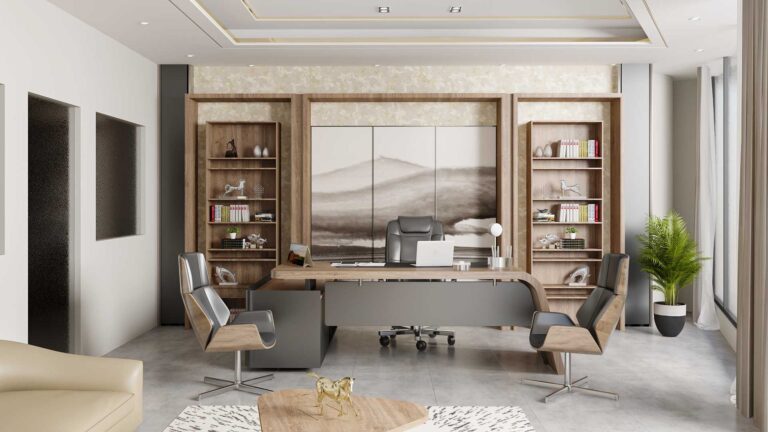
Transform Your Workspace with Office Furniture: A Comprehensive Guide
Your workspace is more than just a place where work gets done; it’s an environment that shapes productivity, creativity, and employee well-being. The right office furniture plays a crucial role in creating an efficient and comfortable workspace. In this comprehensive guide, we’ll explore the world of office furniture, from its impact on productivity to the latest trends and how to choose the best pieces for your needs.
The Importance of Office Furniture
Productivity: Well-designed office furniture can significantly impact productivity. Ergonomic chairs and adjustable desks, for example, promote comfort and reduce the risk of work-related injuries, allowing employees to focus on their tasks more effectively.
Employee Comfort: Employees spend a substantial portion of their day at their desks. Comfortable and supportive furniture helps prevent discomfort and fatigue, enhancing job satisfaction and overall well-being.
Aesthetic Appeal: Office furniture contributes to the overall aesthetics of your workspace. A well-designed office not only impresses clients and visitors but also fosters a positive and motivating atmosphere for employees.
Space Utilization: Efficiently designed office furniture can maximize the use of available space, helping you make the most of your square footage. This is particularly important in modern offices where open layouts are popular.
Office Furniture Types
Desks: Desks are the workhorses of the office. They come in various shapes and sizes, including executive desks, standing desks, and adjustable desks. The choice depends on the role of the employee and the specific tasks they perform.
Chairs: Office chairs should be comfortable and ergonomic to support long hours of work. Ergonomic chairs come with adjustable features, lumbar support, and proper cushioning to promote good posture.
Storage Solutions: Filing cabinets, bookshelves, and storage units help keep the workspace organized. The choice of storage solutions depends on the volume of paperwork and office supplies your team uses.
Meeting Tables: Effective collaboration is essential in modern workplaces. Meeting tables come in various shapes and sizes, accommodating different team sizes and styles of interaction.
Reception Furniture: The reception area creates the first impression for visitors. Reception desks, waiting area seating, and decorative elements all contribute to the welcoming atmosphere.
Conference Room Furniture: This includes conference tables, chairs, and presentation equipment. The furniture should be functional and create a conducive environment for meetings and presentations.
Cubicles and Workstations: In open-plan offices, cubicles, and workstations offer individual workspaces with some privacy. They are designed to maximize space and provide a dedicated area for employees.
Trends in Office Furniture
Flexible Furniture: With the rise of remote work and flexible schedules, many offices are adopting furniture that can be easily reconfigured. Modular desks, lightweight chairs, and mobile storage units are becoming more common.
Biophilic Design: Bringing elements of nature into the office is a growing trend. Furniture made from natural materials like wood and incorporating plants or greenery can create a more relaxed and creative atmosphere.
Minimalist Aesthetics: Minimalist designs are gaining popularity, with clean lines and a clutter-free look. This design trend promotes a sense of order and simplicity in the workspace.
Ergonomics: As companies prioritize employee well-being, ergonomic furniture continues to be a significant trend. Chairs and desks that promote good posture and reduce the risk of musculoskeletal issues are in high demand.
Technology Integration: Furniture with built-in technology is becoming more common. This includes charging ports, wireless charging pads, and integrated cable management to keep workspaces neat and efficient.
Choosing the Right Office Furniture
Consider Employee Needs: Different roles require different types of furniture. Consider the needs of your employees when selecting furniture. For instance, creative teams might benefit from collaborative workspaces, while executives might prefer more private offices.
Budget: Determine your budget for office furniture. It’s essential to strike a balance between quality and cost-effectiveness. Remember that investing in quality furniture can pay off in terms of employee comfort and longevity.
Space Planning: Measure your workspace carefully and plan the layout to make the most of available space. Consider factors like traffic flow, accessibility, and the need for privacy.
Ergonomics: Prioritize ergonomic features in chairs and desks to ensure employee well-being. Adjustable chairs and sit-stand desks can make a significant difference in comfort and productivity.
Aesthetics: Your office furniture Dubai should align with your brand and company culture. Consider the color, style, and materials that best represent your organization.
Durability: Office furniture is a long-term investment. Look for high-quality materials and craftsmanship to ensure your furniture lasts for years.
Supplier Reputation: Choose a reputable supplier or manufacturer known for quality and reliability. Read reviews, ask for references, and inspect product warranties.
Sustainability: Consider the environmental impact of your office furniture. Many manufacturers now offer sustainable and eco-friendly options, which can align with your company’s values and goals.
Customization: Some furniture suppliers offer customization options, allowing you to tailor pieces to your specific needs and style preferences.
Employee Input: Involve your employees in the furniture selection process. Their input can provide valuable insights into their needs and preferences.
The Benefits of a Well-Furnished Office
Investing in quality office furniture offers several benefits:
Enhanced Productivity: Comfortable and well-designed workspaces contribute to increased employee productivity and job satisfaction.
Positive Impressions: A well-furnished office creates a positive impression on clients, partners, and visitors, reflecting professionalism and attention to detail.
Employee Well-being: Ergonomic furniture promotes employee well-being by reducing the risk of musculoskeletal issues and discomfort.
Adaptability: Modular and flexible furniture allows you to adapt to changing needs and office layouts.
Retention and Recruitment: A well-furnished office can help attract and retain top talent, showcasing your commitment to providing a conducive work environment.
In conclusion, office furniture is more than just tables and chairs; it’s an integral part of your workspace’s functionality and aesthetics. By carefully selecting the right furniture that aligns with your organization’s needs and values, you can create a workspace that enhances productivity, fosters well-being, and leaves a lasting positive impression.



